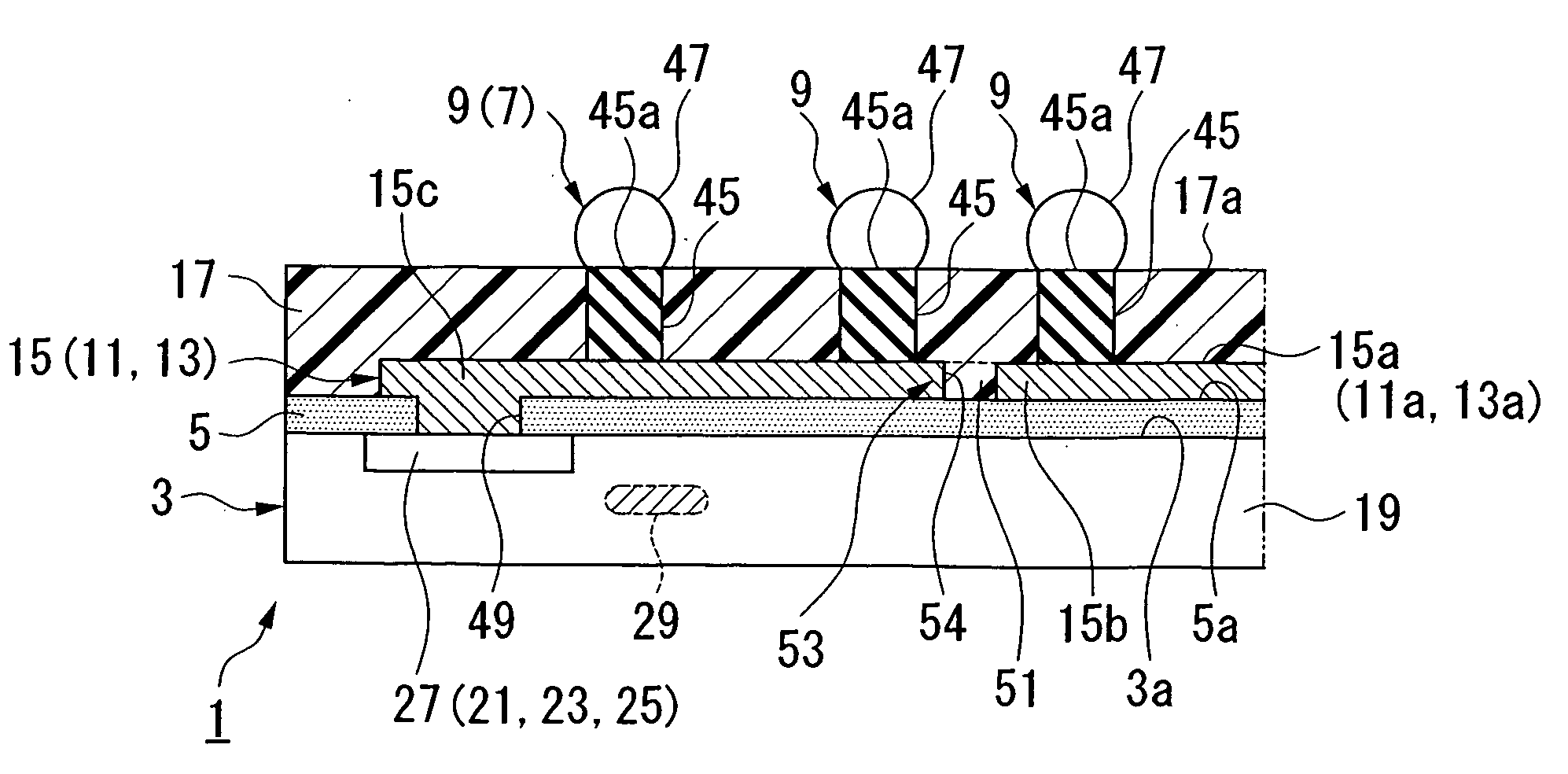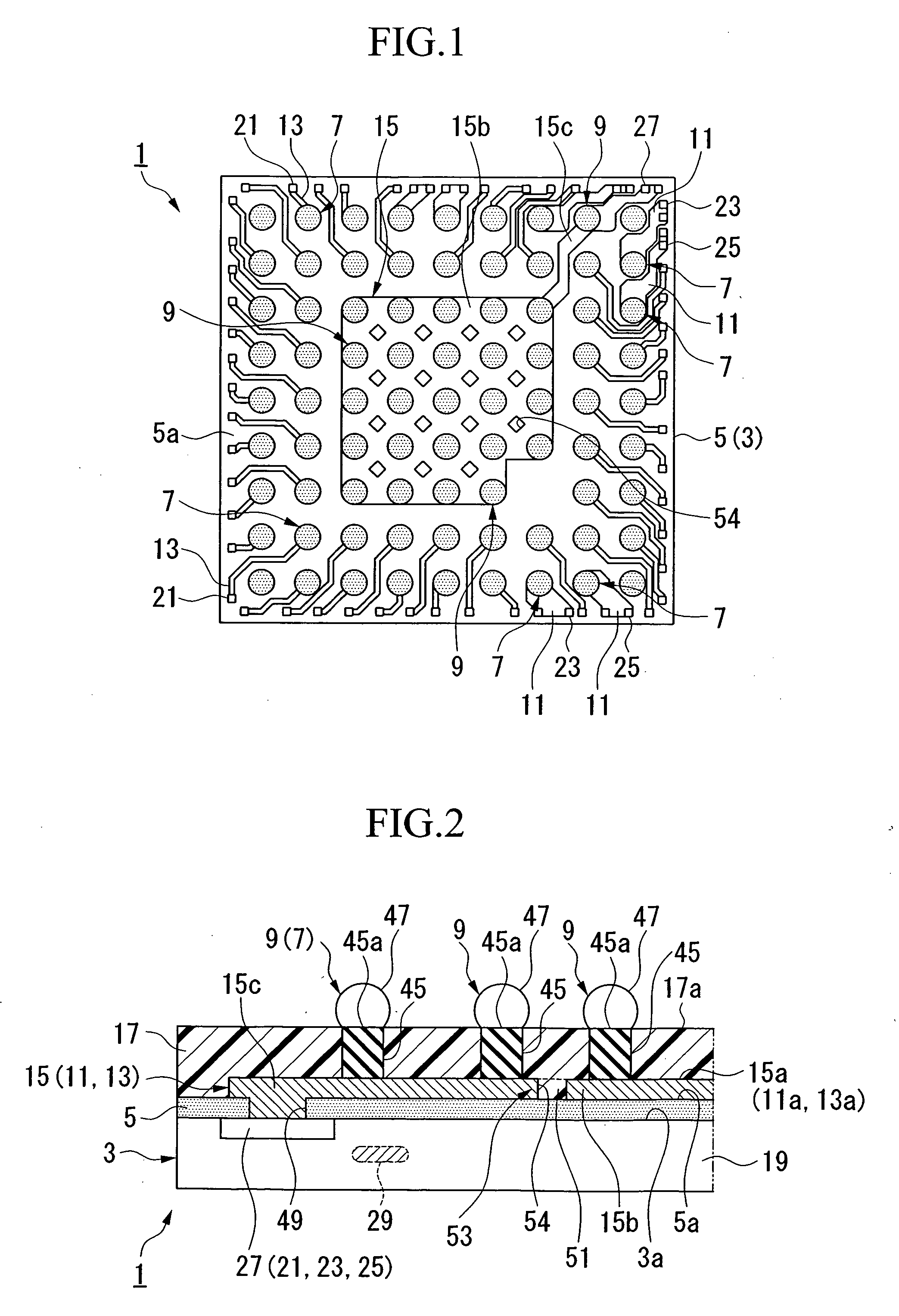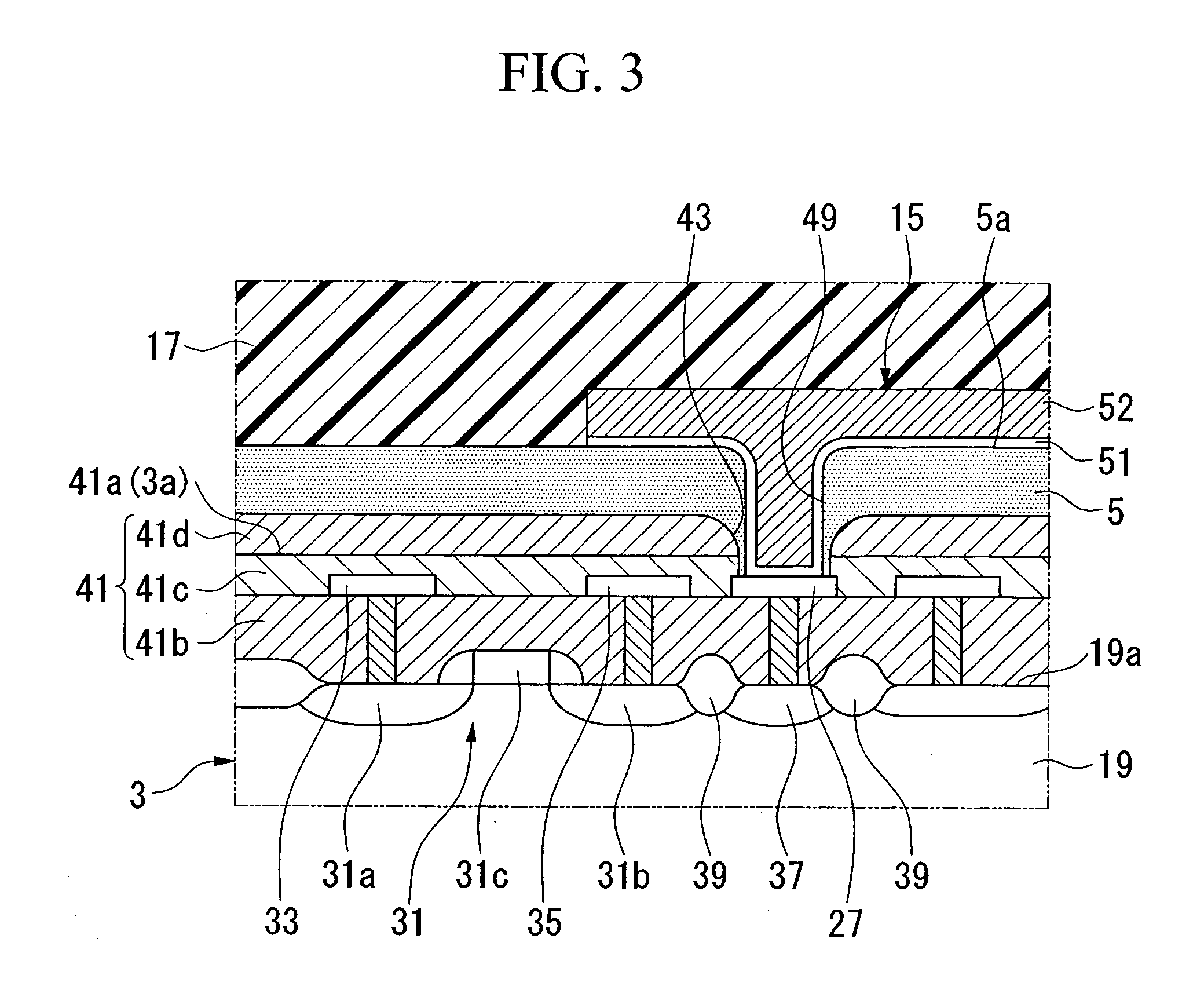Semiconductor element and wafer level chip size package therefor
a technology of semiconductor elements and chip sizes, applied in the direction of semiconductor devices, semiconductor/solid-state device details, electrical apparatus, etc., can solve the problems of not providing space for marking, not equipped with heat dissipation structures allowing efficient, and not providing heat dissipation effects, etc., to avoid the curvature of semiconductor devices, improve heat dissipation characteristics, and increase the overall area of the surfa
- Summary
- Abstract
- Description
- Claims
- Application Information
AI Technical Summary
Benefits of technology
Problems solved by technology
Method used
Image
Examples
first embodiment
1. First Embodiment
[0167] A semiconductor device according to a first embodiment of the invention will be described with reference to FIGS. 1, 2, 3, 4A-4F, and 5. As shown in FIGS. 1 and 2, a semiconductor device 1 includes a semiconductor chip 3 having a rectangular plate-like shape in plan view, an insulating layer 5 (serving as a first insulating layer) formed on a surface 3a of the semiconductor chip 3, a plurality of connection electrodes 7 and heat-dissipation electrodes 9 arranged on the surface 3a of the semiconductor chip 3, a plurality of wiring portions 11, 13, and 15 that are formed on a surface Sa of the insulating layer 5 so as to establish mutual connections between the semiconductor chip 3 and the connection electrodes 7 or the heat-dissipation electrodes 9, and a molded resin 17 (serving as a second insulating layer), which covers the surface 5a of the insulating layer 5 in such a condition that the electrodes 7 and 9 are exposed to the surface 3a of the semiconduct...
second embodiment
2. Second Embodiment
[0218]FIG. 16 is a perspective view showing the exterior appearance of a wafer level chip size package (WLCSP) in accordance with a second embodiment of the invention. FIG. 17 is a front view of the WLSCP; and FIG. 18 is a side view of the WLCSP. Reference numeral 101 designates a silicon substrate (or a semiconductor substrate) having a rectangular shape in plan view, on which integrated circuits (or electronic circuits, not shown) are formed. Reference numerals 102 designate metal pads realizing connections with external devices, which are arranged in a rectangular formation along the peripheral portion of a prescribed surface 101a of the silicon substrate 101 and each of which has a semi-elliptical shape in cross section. Reference numerals 103 designate channels, which are formed in parallel with each other on a backside surface 101b opposite to the prescribed surface 101a and each of which has a rectangular shape in cross section. As shown in FIG. 17, the ch...
third embodiment
3. Third Embodiment
[0264]FIG. 26 is a side view showing a wafer level chip size package (WLCSP) that is mounted on a printed-circuit board in accordance with a third embodiment of the invention; FIG. 27 is a plan view showing a prescribed surface of the WLCSP; and FIG. 28 is a plan view showing a prescribed surface of the printed-circuit board.
[0265] A WLCSP 221 includes a silicon substrate (or a semiconductor substrate) 222 having a rectangular shape in plan view, in which integrated circuits (or electronic circuits, not shown) are formed. Connection pins (serving as first terminals) 223, which are composed of conductive materials such as copper (Cu) and aluminum (Al) so as to establish electric connections with external devices, are arranged at selected points of the grid on a prescribed surface 222a of the silicon substrate 222. Non-connection pins (serving as second terminals) 224, which are not electrically connected with external devices, are arranged at other selected positi...
PUM
 Login to View More
Login to View More Abstract
Description
Claims
Application Information
 Login to View More
Login to View More - R&D
- Intellectual Property
- Life Sciences
- Materials
- Tech Scout
- Unparalleled Data Quality
- Higher Quality Content
- 60% Fewer Hallucinations
Browse by: Latest US Patents, China's latest patents, Technical Efficacy Thesaurus, Application Domain, Technology Topic, Popular Technical Reports.
© 2025 PatSnap. All rights reserved.Legal|Privacy policy|Modern Slavery Act Transparency Statement|Sitemap|About US| Contact US: help@patsnap.com



